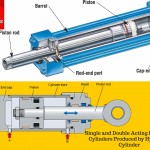Algorithmic Trading began in India on April 4, 2008 when SEBI allowed investors in the Indian market access to Direct Market Access facility. This facility allows institutional clients to buy and sell orders without any intervention by brokers. Clients use the Direct Market Access (DMA) to gain access to the exchange trading system through the broker infrastructure.
Huge Cost Involved
The entire securities market and the banking sector welcomed this move on the part of the Indian regulators due the recession present at the time it was introduced. In short, the Algo trading was Automated Trading submitted by the computer program without any human intervention to the exchange. You need an entirely new server for automated trading and this costs a huge amount of money. Wisdom Capital offers many Brokerage plans that help new traders to get a foothold in trading.
To make the fully automated trades, you must have an automated strategy which you can tweak to trade by itself. The buy/sell commands are in-built into the strategy which is then forwarded to the exchanges without any human intervention. This means that each expert will have his own trading strategy.
Examples of predesigned strategies are Future vs. Future Bidding NFO/CDS/BFO, Option Hit Model (2L3L IOC) NFO/ CDS, 2L3L Bidding NFO/CDS/BFO, and more. In the Future vs. Future Bidding you use an arbitrage roll-over strategy that attempts to capture the price differential between any two future tokens. Strategy will bid according to the mandate specified for the first leg based on the price of the second leg. You can check the trading platform offered by Wisdom Capital to see more details.
Various Strategies Involved
In the Option Hit Model (2L3L IOC) NFO/ CDS strategy allows the user to create any combination of 2leg/3leg including straddle/strangle/butterfly and more. All are IOC orders that ensure user mandate is maintained. In the 2L3L Bidding NFO/CDS/BFO the users have access to the strategy that allows creation of any 2leg/3leg combination including butterfly, strangle, straddle, and more. In this type of bidding, the user can get more than the desired mandate under ideal conditions.
The other strategies include the 4L strategy (IOC and Bid) NFO/CDS through which the user can create 4 leg option combination such as Condor Strategy. Users must place order as 3-leg IOC +1. The user can choose whether to use the IOC based order or the bidding based order. Then, you have the Single Strike Bidding NFO/CDS/BFO which is a volume strategy. User trades options based on user defined implied volatility spreads.
More Strategies for Trading
When the Algorithmic trading was first offered on the Indian exchanges, there was a waiting period of six months for users to get a space on the server racks. This showed the regulatory bodies and the Indian exchanges that Algorithm Trading was welcomed in India. Although India was not one of the early participants in the Algo Trading, it became popular within a short time of SEBI allowing the traders in India to participate in the Algo trading.
High frequency trading is one of the subsets of algorithm trading. Using high frequency trading, you can buy and sell thousands of shares in a couple of seconds. At present, 30% of the trade on the Bombay Stock Exchange is high speed. In the National Stock Exchange, it accounts for 46% of all the trade.










Comments are closed.